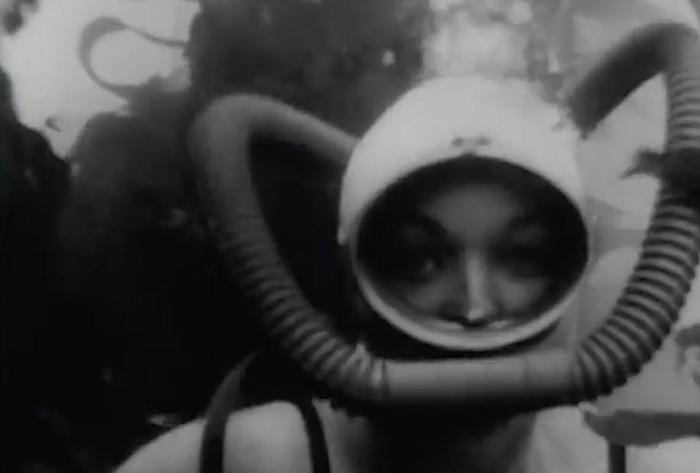Monster Movie Monday: Monster from the Ocean Floor (1954)
Review Overview
Featured creature
8Kimbell's character
8Problematic element
5Matthew Turner | On 08, Aug 2022
Director: Wyott Ordung
Cast: Anne Kimbell, Stuart Wade, Dick Pinner, David Garcia
Certificate: 13+
In the mood for a creature feature? Amazon Prime has a veritable menagerie of monster movies, so we’re working our way through them, one killer beastie at a time. Welcome to Monster Movie Mondays.
Directed by Wyott Ordung, this 1954 sci-fi thriller deserves a place in film history for being the first of many creature features produced by Roger Corman. (It was Corman’s second film as producer, after he co-produced Highway Dragnet in the same year.)
Running to a trim 65 minutes, the film stars Anne Kimbell as Julie Blair, a professional illustrator who falls for marine biologist Steve Dunning (Stuart Wade) while on holiday in a small Mexican seaside village. After a diver mysteriously disappears, Anne hears local rumours of a sea monster and sets out to investigate, while Steve remains sceptical.
Technically, there are three featured creatures, as a briefly glimpsed giant octopus (“Relax Julie, an octopus is the biggest coward in the sea”) and a giant shark (“He’ll snap off your legs like ripe bananas”) are both briefly in the frame for the sea monster’s crimes, until Julie manages to hook a bit of creature flesh on an anchor and Steve realises it’s a giant amoeba. The actual amoeba monster is only seen twice, making a brief appearance out of the water before rallying itself for the exciting climax.
The monster’s first appearance is a risibly poor super-imposed effects shot, which is not too clear on detail, but the special effects in the finale are surprisingly good, achieved with a combination of clever camera work (angles, focus, etc) and a more than decent model. Complete with moving tentacles and a large central eye, the creature is actually pretty creepy – it’s just a shame we don’t get to see it absorb anyone, the way it absorbed the diver, a cow and a local dog, offscreen.
The script, by Bill Danch, feels ahead of its time, predicting future food crises and coming up with solutions such as growing crops on the ocean floor. And since Steve likes to talk a lot, it’s also filled with interesting facts, such as the Pacific Ocean covering 73 million square miles, a female cod laying over 8 million eggs and what to do in the event of a shark attack.
Danch’s script also feels progressive in its treatment of Anne Kimbell’s character, who bats away Steve’s blatant sexism (“I still don’t see why you have to stick your pretty little chin out”) with a veritable call to arms towards making the world a better place: “That’s one of the reasons the world is in such a mess, Steve – everybody’s afraid to start something. Well, I’m not.” She then promptly heads out to find and kill the monster on her own, like a total badass.
Sadly, the script isn’t as enlightened as you might hope. There’s an unfortunate, slightly racist – and entirely unnecessary – bit where it turns out the locals have been sacrificing animals to the monster for years, and they’re quite happy to let it have Anne, saying things like “the fairest must be sacrificed to the thing” and helping it along by secretly bloodying the water while she’s out monster hunting.
Kimbell makes an appealing lead, investing Anne with intelligence, courage and compassion, in that she’s basically trying to save the entire village from the monster. She’s also great at underwater screaming – or rather, making an impressive screaming face in her scuba gear, even if we can’t hear the sound. (Her shark fighting skills leave something to be desired, though – there’s a hilarious bit where she tries to stab one as it’s swimming away and it looks like she’s swatting away a fly.)
The supporting cast aren’t quite in Kimbell’s league – Steve sings a terrible song at one point and the less said about the “treacherous” Mexicans, the better – but look out for an unbilled Roger Corman in his first onscreen appearance as Tommy, a crewman for the marine biologists.
Finally, the film is notable for a particular stroke of producing genius from Corman, who brought the film in for a mere $12,000. Having read about an electric one-man submarine made by Aerojet General, Corman persuaded the company to contribute one for free, in return for a screen credit, and then put the sub to spectacular use in the film’s exciting climax. Let’s put it this way: it ends up exactly where you’d hope it would in a film about a giant amoeba with one enormous eye.



















